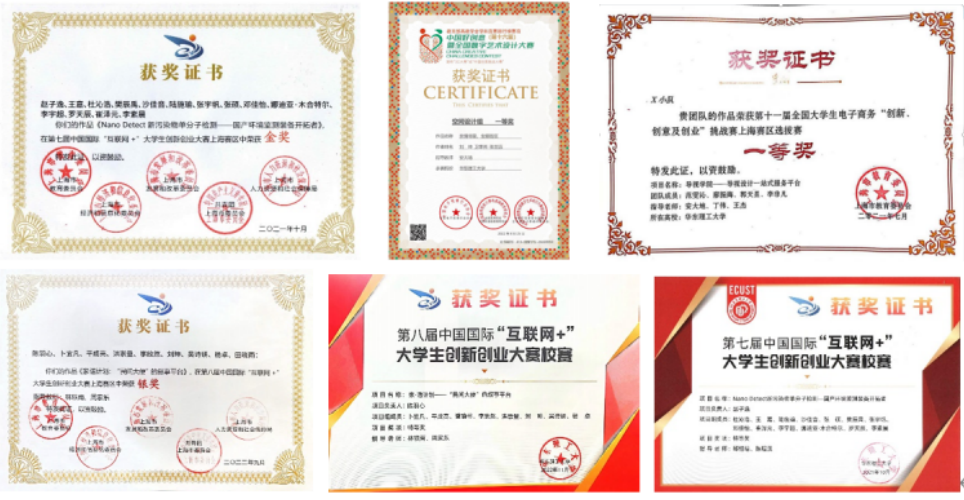
Introduction
Environment Design major focuses on the relationship between humans and their environment, aiming to enhance the overall quality of living spaces. It primarily investigates how to create or optimize human activity spaces, serving as a research and applied discipline that emphasizes social relevance, practicality, comprehensiveness, systematicity, and regional specificity. Characterized by the integration of theoretical research and practical creation, environmental experience and aesthetic guidance, technical rationality and humanistic care, as well as spatial design and community building, this discipline centers on collaborative indoor and outdoor environmental innovation design, urban and rural public space environmental design, with a distinctive focus on contemporary environmental renewal design, thematic environmental design, and virtual environmental design. It explores modern environmental design principles that are ecological, human-centered, artistic, and technologically advanced, while consistently pursuing sustainable design methods and skills.
Environment design education at East China University of Science and Technology began in 1994, and after more than 30 years of development, it has formed a complete curriculum structure and talent cultivation system. In the new stage of sustainable urban-rural development led by artificial intelligence, and in response to technological progress and new development needs such as individuals, groups, society, economy, culture, and ecological environment, the Environmental Design major has established a professional curriculum system consisting of theory and history, thinking and methods, space and form, engineering and technology, and application and practice. It also includes a professional teaching system consisting of eight modules: professional foundation module, professional theory module, professional practice module, digital design module, intelligent manufacturing technology module, collaborative design module, full process design module, and personality development module. It elevates environmental design from the material category to the material and non-material categories under the overall view of human behavior and activity environment, and from the traditional stage design to the systematic design of the entire life cycle of human settlement environment development.

Professional Features
The professional characteristics are reflected in the student-centered approach, which combines comprehensive ability cultivation with professional interest cultivation, forming characteristics in the selectivity and adaptability of professional development. The second is to meet the needs of social development, with equal emphasis on indoor and outdoor environment design, as well as physical and virtual spaces. Through the moderate extension of spatial scale, students' professional practical abilities are broadened, forming the characteristics of this major in the breadth of environmental design. The third is to integrate the advantages of relevant disciplines at East China University of Science and Technology, strengthen the integration of science and art, and promote collaborative innovation, leveraging the system integration and comprehensive application advantages of the environmental design major, and forming its own characteristics in the depth of environmental design.

Faculty
Professional teachers are mainly middle-aged and young teachers with multidisciplinary backgrounds. 70% of them hold associate professor titles or above, 80% are graduate supervisors, and 80% have doctoral degrees. Most teachers have profound theoretical research and rich practical experience, and hold important positions in various academic research groups and industry institutions both domestically and internationally. In recent years, the teacher has won one first prize in the National College Teacher Teaching Innovation Competition, one special prize and one first prize in the Shanghai College Teacher Teaching Innovation Competition, and one special prize in the Shanghai Design 100+ organized by the Shanghai Municipal Commission of Economy and Information Technology.
Curriculum and textbook construction
In recent years, the Environment Design major has been awarded 2 national first-class undergraduate courses, 1 Shanghai university demonstration undergraduate classroom, 1 Shanghai first-class course, 4 Shanghai key courses, 5 school level key courses, 1 school level ideological and political project, 3 college level ideological and political projects, and 7 school level integrated case teaching projects. Received 2 second prizes and 2 third prizes for excellent teaching achievements in the school, 1 second prize for excellent achievements in textbooks from the National Tourism Administration, and 1 textbook for the 12th Five Year Plan for civil engineering majors in general higher education. Three course textbooks are currently being written.

Teaching conditions and professional exchanges
This major has a complete teaching space and equipment on campus, and has co-built and co-created with numerous enterprises, mainly Shanghai design companies, outside the campus. More than 20 practical teaching bases have been established, forming a comprehensive platform for industry university research collaborative innovation.
The Environment Design major adheres to the development concept of cross-border integration, integration of science and art, integration of knowledge and action, and collaborative innovation. It implements the principle of going out and inviting in, fully utilizes its influence in the industry and interdisciplinary professional resources, actively organizes and plans various academic forums, exhibitions, and lecture exchange activities with international level and professional influence, and broadens students' professional horizons.

Professional core courses
Design modeling foundation; Design thinking and expression; Design graphics; Spatial composition, Open source hardware and programming; Digital art design; Digital environment design; Environmental design principles; Environmental design history; Environmental behavior; Architectural preliminary; Innovative space design; Landscape design preliminary; Urban public space design; Commercial space design; Exhibition design; Theme experience design; Digital architecture design; Public facility design; Big data environment design; Digital environment update; Light environment design; Green building and materials; AIGC environmental design; Environmental intelligent manufacturing design; Future community design; Thematic design; Design planning; Design operation




